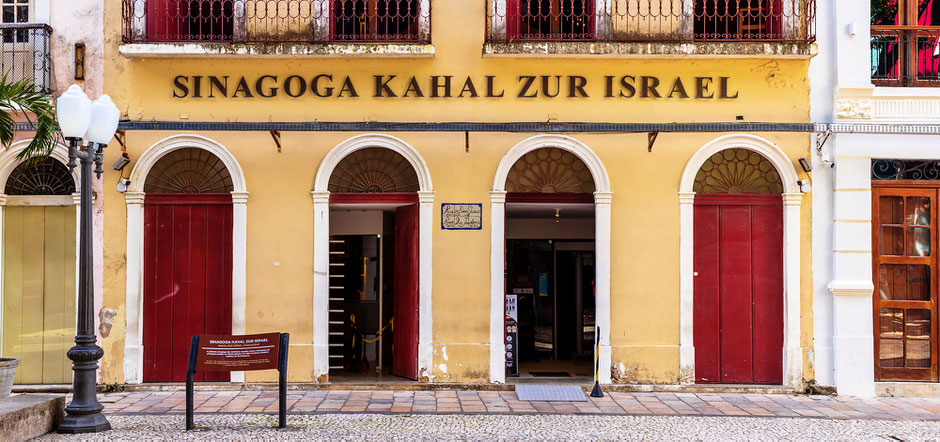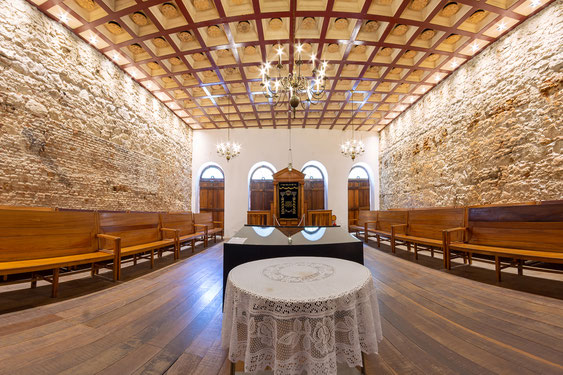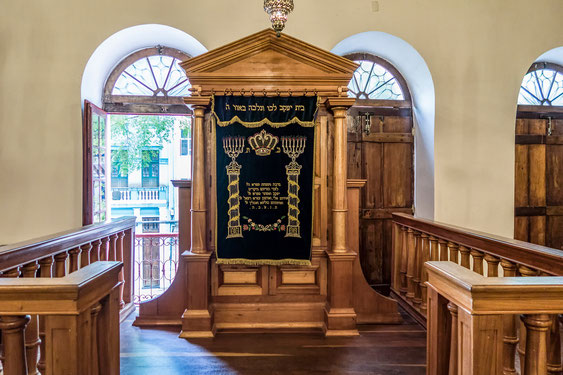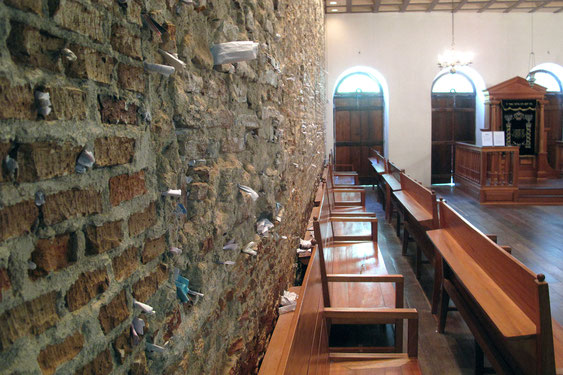Kahal Zur Israel Synagogue - קהל צור ישראל
Recife and Jewish Immigration

The city of Recife in north-eastern Brazil is home to the oldest synagogue in the western hemisphere. The Kahal Zur Israel ‘Rock of Israel’ Synagogue became a landmark of Jewish culture in the New World. Later, Jews who had emigrated from Recife laid the cornerstone for the first synagogue in North America in what was then the city of ‘Nieuw Amsterdam’, now New York City.
Why is ‘Israel’s Rock’ in Recife?
In the late Middle Ages, numerous Jews lived on the Iberian Peninsula. In "Sefarad," the biblical name for Spain, the culture of the Sephardic Jews developed. This community was one of the most
important groups within Judaism. Andalusia became a center of Jewish life in the European Middle Ages. It was here that one of the most stable and prosperous Jewish societies of that time was
established, producing many significant Jewish scholars.
The so-called Golden Ages in Andalusia came to an end in 1492/96 due to forced Christianization and the expulsion of Jews from Spain and Portugal. These events occurred in the course of the
Inquisition. Many Jews fled to Amsterdam or North Africa.
Around 1630, the Dutch wrested northeast Brazil from the Catholic Portuguese and set up their headquarters in Recife (then Mauritsstad). They brought progress and openness to the country.
Governor-General Johann Moritz of Nassau-Siegen allowed religious freedom, which attracted many Jews. In 1637, Jews from Spain and Portugal began building the ‘Sephardic’ synagogue, which was
inaugurated in 1642. Isaac Aboab da Fonseca became the first rabbi. The Jewish community in Recife had over 1,600 members.
But the liberal period lasted only a quarter of a century. In 1654, the Portuguese defeated the Dutch, and their era in northeastern Brazil came to an end.
Jews from Recife are among the founders of New York City
The old terror returned for the Jews. Many went back to Amsterdam. 23 Jews from Recife, however, sailed a different course. In early September 1654, after nine months at sea, they landed in ‘Nieuw Amsterdam’. The despotic governor Peter Stuyvesant did not welcome them, but they stayed. They were given land for a Jewish cemetery. Ten years later, the British conquered Nieuw Amsterdam, which has been called New York City to this day.
In 1695, they laid the foundation of the first synagogue in North America. At the beginning of the 18th century, the Jewish community in New York flourished. When the New York Stock Exchange was
founded in 1792, Benjamin Seixas and Ezekiel Hart were among the first members.
Today, around 972,000 people in New York City are of Jewish faith or descent, making up 12% of the total population. In Manhattan, the proportion is as high as 20%. This makes New York City the city with the largest Jewish community in the world, with more Jews living here than in the whole of Jerusalem.
A valuable testimony of Sephardic Jews
In the Recife harbour district, on Rua do Bom Jesus of all places, the name ‘Synagogue Kahal Zur Israel’ is written above the house number 197. The building was demolished in the 20th century. After the discovery of a ‘Bor’, the demolition was stopped by archaeologists in 1999, excavated and rebuilt.
Between the brown bricks of the preserved 17th-century wall, small white slips of paper with prayers are stuck. This scene is reminiscent of the Wailing Wall in Jerusalem. It is a quiet place of prayer.
The Jewish community uses the synagogue for weddings and bar mitzvahs because of its history and historical significance.
"Bor": A fountain for ritual purification
Dimly lit under the massive, transparent glass panel in the floor, you can see the spectacular discovery of the ‘bor’. A well from which water was drawn for the ritual cleansing prescribed in
Judaism. Jewish men had to cleanse themselves at least once a year, Jewish women every month. The well is in its original condition, as is the floor from the first half of the 17th century. The
mikvah, an immersion bath, is about two metres away. It has been reconstructed to reflect its original meaning and function.
The synagogue houses a museum that provides information about the history of Judaism in Recife. Boris Bernstein, the chairman of the Jewish community in Recife, says it is a reminder of the
peaceful coexistence of all religions.









